
Welcome to our ultimate efficient heating guide!
Over the course of this year, we have seen prices rise across every industry with gas prices especially having unparalleled increases. While the energy cap was placed in April, we are set to see another cap increase in October, sending energy prices to never seen before levels. The efficiency of heating systems has become increasingly important to ensure the money being spent on heating your home is not being wasted.
There are numerous things you can do to increase your heating systems efficiency, many of which you can perform yourself without the need of a qualified plumber.
Below we’ll cover everything you can do to make sure you’re not wasting money this winter.

Annual Boiler Service
To keep your boiler running as efficiently as possible, arranging a boiler service every 12 months should be the first thing you consider, an annual boiler service will cost you on average between £75 to £150 depending on the model of you boiler
A boiler service will usually take between 1 to 2 hours dependant on if its an interim or full service and may consist of the following:
If any issues are found during a service, your plumber will be able to point these out, so any repairs or replacements can be carried out (without the need to pay for an emergency call out).
The Gas Safe Register has some more information on why it’s important to service your boiler and get a gas safety check every year so we recommend giving it a read if you want to start looking after your boiler.
Unfortunately boilers don't last forever, if your boiler is a few years old it may be worth learning when it's time to replace it
To keep your boiler running as efficiently as possible, arranging a boiler service every 12 months should be the first thing you consider, an annual boiler service will cost you on average between £75 to £150 depending on the model of you boiler
A boiler service will usually take between 1 to 2 hours dependant on if its an interim or full service and may consist of the following:
- Checking for any issues
- Spraying electrical joints with lubricant
- Checking flue seals
- Flue gas analysation
- Gas rate check
- Cleaning any dust from the inside of the boiler
- Cleaning the condensate
- Water sample test
If any issues are found during a service, your plumber will be able to point these out, so any repairs or replacements can be carried out (without the need to pay for an emergency call out).
The Gas Safe Register has some more information on why it’s important to service your boiler and get a gas safety check every year so we recommend giving it a read if you want to start looking after your boiler.
Unfortunately boilers don't last forever, if your boiler is a few years old it may be worth learning when it's time to replace it
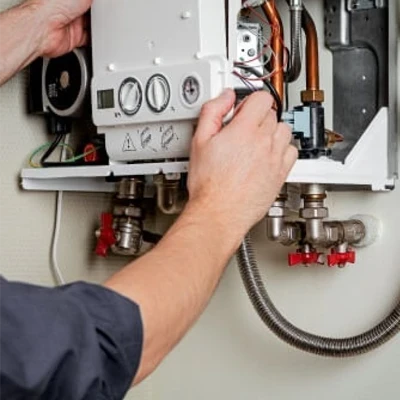
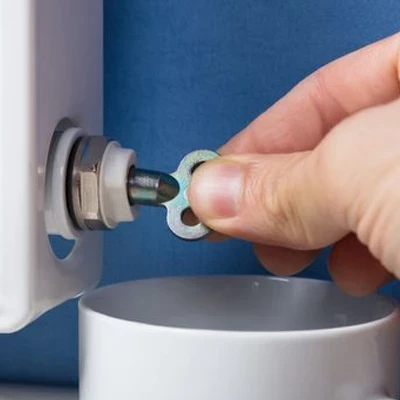
Bleeding your radiators
“Radiators? I thought this section was about boilers”
Yes, while this tip does focus on your radiators, maintaining your radiators also helps your boiler, if your radiators are not running efficiently, it will cause your boiler to have to work a lot harder.
If there are no further issues, bleeding your radiators is a task that you can do quickly and easily without the need to call a plumber. It’s a simple matter of opening a valve on your radiator and letting out any trapped air that is causing them to not fully heat up.
If you’re unsure how to bleed your radiators you can read out blog, 5 steps to bleed your radiators for step-by-step instructions
Power Flushing
Power flushing is another service that focuses on your radiators but can greatly benefit your boilers. One sign that you need to powerflush your radiators is an increasingly noisy boiler
Powerflushing is a deep clean of your radiators and central heating system that uses chemicals to flush any sludge, rust and other debris that settles in your radiators, pipes and boiler and prevents them from working efficiently
Cleaning out the sludge from your central heating system is an effective way to keep your boiler at its best and prevent dirt from corroding or damaging your system
You can learn more about Power Flushing in our Blog "What is Power Flushing?"
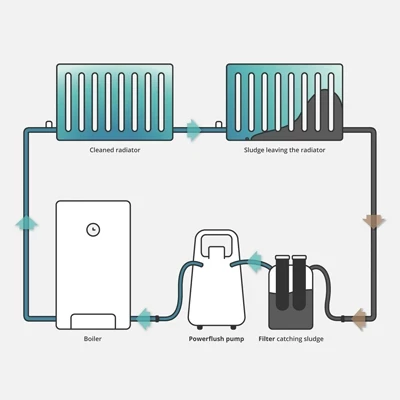
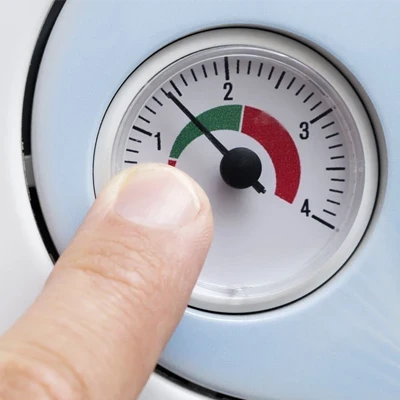
Check Your Boiler Pressure
The pressure of your boiler can be a leading factor in how efficiently it performs. Over time, your boiler can lose pressure, decreasing its efficiency.
How often you need to top up your pressure will depend on which boiler you have, but checking the pressure gauge every few months will mean you can keep on top of things.
If your boiler pressure does drop to low (below 1 bar on most boilers) it is easy to rectify, check the manual for your boiler, ask a plumber for help or check out our guide on how to top up your boiler pressure
If you find your boiler pressure is continuously dropping, fret not, it might just be a common issue with an easy fix
Clear away clutter near your boiler
Boilers need to be kept well ventilated for them to work well, meaning the space around them needs to be kept clear
If your boiler is inside a cupboard, for example, ensure the cupboard isn’t filled with coats, bags and other items as this can create problems for the boiler. If you are unsure if the area around your boiler is properly ventilated, your plumber will be able to advise you during your annual service.
Fix Issues Quickly
No matter how old your boiler is, it’s vital that if you encounter an issue with it, to have it rectified as quickly as possible.
Whether your boiler requires a small, non-urgent repair to aid it in running a little better or it needs replacing entirely, you should ensure you hire a fully qualified plumber to carry out the work as soon as you can to ensure your central heating system stays safe and efficient.
Boilers need to be kept well ventilated for them to work well, meaning the space around them needs to be kept clear
If your boiler is inside a cupboard, for example, ensure the cupboard isn’t filled with coats, bags and other items as this can create problems for the boiler. If you are unsure if the area around your boiler is properly ventilated, your plumber will be able to advise you during your annual service.
Fix Issues Quickly
No matter how old your boiler is, it’s vital that if you encounter an issue with it, to have it rectified as quickly as possible.
Whether your boiler requires a small, non-urgent repair to aid it in running a little better or it needs replacing entirely, you should ensure you hire a fully qualified plumber to carry out the work as soon as you can to ensure your central heating system stays safe and efficient.
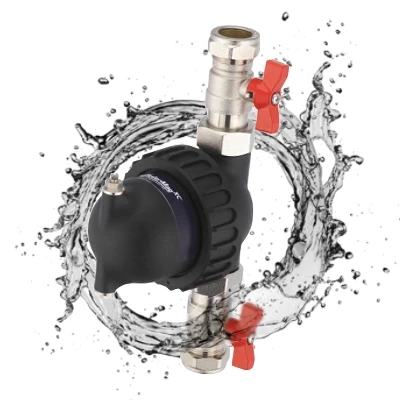
Filters & Inhibitors
Problems can begin to occur when this sludge settles in places like the bottom of radiators causing issues such as pump failures, damageing heat exchangers and causing unequal heat dispersion in your radiators, leading to expensive repair bills. System filters stop these issues occurring by catching this sludge, using one will not only save your heating system but also money on repair bills.
Filters work by using a magnetic core, as the water in the system flows through the filter, the debris is caught by the filter, the debris is caught by the filter due to its magnetic properties, this allows the filter to be easily cleaned, avoiding the need for full system flushes to clear waste.
To put it simply, a magnetic filter is a worthwhile investment, the low price of one can offset the costs of hundreds if not thousands in repair bills. If you are considering investing in a magnetic filter, our recommendation would be the “Boilermag XC 22mm System Filter”
- Heating System Filters
Problems can begin to occur when this sludge settles in places like the bottom of radiators causing issues such as pump failures, damageing heat exchangers and causing unequal heat dispersion in your radiators, leading to expensive repair bills. System filters stop these issues occurring by catching this sludge, using one will not only save your heating system but also money on repair bills.
Filters work by using a magnetic core, as the water in the system flows through the filter, the debris is caught by the filter, the debris is caught by the filter due to its magnetic properties, this allows the filter to be easily cleaned, avoiding the need for full system flushes to clear waste.
To put it simply, a magnetic filter is a worthwhile investment, the low price of one can offset the costs of hundreds if not thousands in repair bills. If you are considering investing in a magnetic filter, our recommendation would be the “Boilermag XC 22mm System Filter”
2. Inhibitors
Central heating inhibitor is a chemical liquid that acts as a central heating protector. It is placed in your central heating system to help prevent inhibiting substances such as rust. Sludge and corrosion from hindering the performance and efficiency of your home heating.Central heating corrosion inhibitor contains a mixture of potassium tetraborate tetrahydrate along with disodium molybdate, sodium nitrate and 2,2’2”-nitrilotriethanol.
It is typically pale yellow or clear in appearance, it is recommended to be stored in a cool, well-ventilated area away from direct sunlight.
Central heating inhibitor works by helping to prevent internal corrosion of your heating system and keep your boiler functioning effectively for as long as possible. The chemicals within the heating system inhibitor will work together to break down sludge in your heating system and protect it from building up again.
Without inhibitor, the metals and water that are within your heating system can react with each other and cause rust and corrosion. The presence of these inhibiting substances can force your boiler to work harder in order to provide you with heating and hot water, causing higher energy bills and increasing the likeliness of a breakdown.
You should change your system inhibitor once a year, over time the chemicals in the system will dilute and begin to loose effectiveness.
If your curious about what other heating system chemicals do and why you should use them, you can learn more in our blog
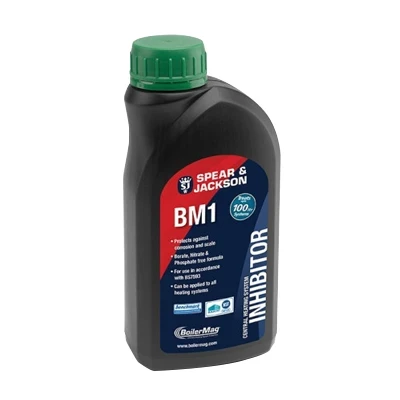

Having the correct central heating controls could save you up to 40% on your energy bills, so it makes sense to choose the most effective type of controls for you and your home
There are 4 different types of central heating controls. Here we explain each of them and list their money-saving features.
There are 4 different types of central heating controls. Here we explain each of them and list their money-saving features.
1. Manual Room Thermostats
Manual room thermostats set your room to the temperature you want and keep it there by turning your heating on and off automatically. This is a simple and inexpensive choice but lacks the money-saving features. You will have to adjust the room temperature manually.
Money-saving features
- Frost protection mode: This will stop your pipes from freezing. A room thermostat with this feature will have a snowflake symbol painted on it.
- Ideal temperature range helps you find a temperature that’s both comfortable and economical
- Stand-alone timers: manual room thermostats don’t normally allow you to programme a heating schedule. You may be able to do this using a compatible stand-alone timer.
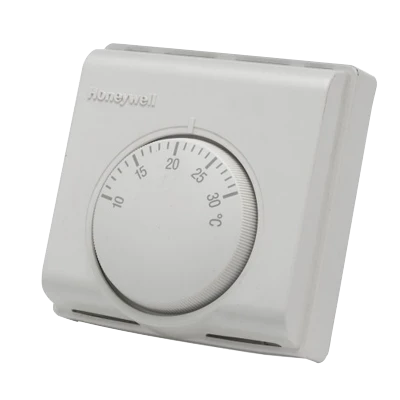
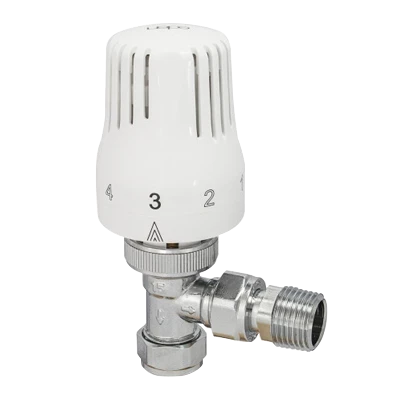
2. Thermostatic Radiator Valves (TRVs)
Thermostatic radiator valves attach directly to the top or bottom of your radiators allowing you to control each radiator in your home separately. TRVs are a simple and inexpensive way to update your heating controls but they are usually manually operated, don’t let you set an exact temperature (in °C) and have few money-saving features. Smart TRVs may also be an option, similar in appearance to a standard TRVs but much more flexible, letting you set unique shedules for each room in your home they are installed in through the use of a smartphone house or controlled through a smartspeaker.
Money-saving features
- Frost protection mode: This will stop your pipes from freezing. Look out for a snowflake symbol painted on the valve
- Ideal temperature range: Shows a range of temperatures or an ideal setting
- Smart TRV’s: Control your heating both manually and via an app or smart speaker
- Additional money-saving features may include seven-day programming and holiday modes on more expensive models
You can learn more about TRVs in our blog and also how to change radiator valves!
3. Programable Room Thermostats
Programmable room thermostats have a built-in timer which lets you schedule your heating to turn on and off automatically at different times of the day at different temperatures. This can help you to save money and keep your home comfortable without you having to manually adjust the heating.
- Frost protection mode: Stops your pipe from freezing
- Holiday Mode: Ensures your pipes don’t freeze and your home will be warm when you return.
- Seven-day Programming: This allows you to program a schedule on what days, times and temperatures your heating will be turned on
- Load and weather compensation: Helps your boiler run as efficiently as possible by adjusting its output based on room temperature and the temperature outside
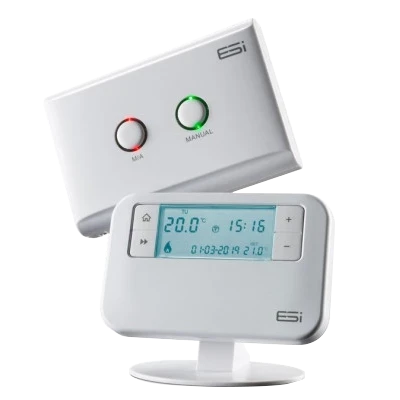
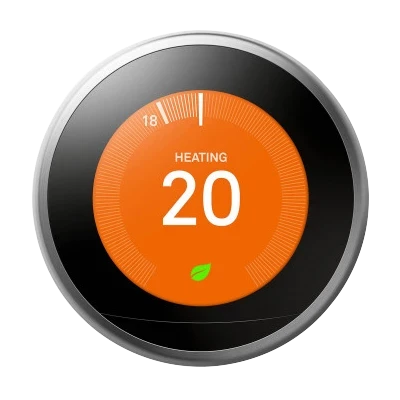
4. Smart Controls
Smart thermostats and TRVs are the most advanced type of heating controls. These are internet-enabled devices which allow you to manage, schedule and adjust your heating and hot water remotely via an app, web browser or text message. Smart heating controls are one of the most expensive options, but they have many money-saving and ease-of-use features
Money-saving features
Smart thermostats and TRVs are the most advanced type of heating controls. These are internet-enabled devices which allow you to manage, schedule and adjust your heating and hot water remotely via an app, web browser or text message. Smart heating controls are one of the most expensive options, but they have many money-saving and ease-of-use features
Money-saving features
- Optimisation: works out how long it takes your home to reach your chosen temperature and sets the heating system to work as efficiently as possible
- Zone Control: Allows you to heat different rooms at different times and temperatures
- Automatic Frost Protection: Stops your pipes from freezing
- Temperature Graphs: Show graphs of your energy use to help you understand and track your energy consumption
- Boost Function: Lets you override your schedule to turn the heating or hot water on for a set amount of time
- Program Modes: Let you set up your own pre-set modes with customised settings
- Mobile controls: Control your heating and hot water on the go via an app. Some also work through a website, text message or email.
- Voice Control: Controls your heating and hot water with voice commands
- Learning Thermostats: Learn your routine and automatically program your heating to match it
- Automation and Geolocation: turn your heating on or off based on whether there is anybody home, using sensors in the home or tracking your phone
- Other smart products: Smart thermostats can be paired with a wide range of other home controls, including smart TRV’s, smart room thermostats, room fans and lighting systems
You can read our blog post on if Smart Thermostats are right for you to learn more

Pipe insulation is foam tubing that is wrapped around any pipes in your home connected to your heating or hot water tank, pipe insulation helps retain the heat saving money and helps prevent your pipes from freezing. It's easy to install and does not require the aid of a professional plumber. It can be purchased in different wall thicknesses, the greater the wall thickness the greater the insulation value.
Installation is easy all you need to do is decide the pipe diameter, purchase the correct size insulation and fit it around the pipe.
To do this, just open the tube where it naturally splits, and carefully place it around your pipe. Push on either side of the split and it will wrap around the pipe closing the split if you choose you can tape the joint.
You will need to cut your foam tubing to fit the length of your pipes, we would recommend using a hacksaw and taking proper precautions
When you encounter a bend in your pipes, cut a tube diagonally, place the two parts of the tube on either side of the bend and push them together. You can secure them in place with duct tape.
Installation is easy all you need to do is decide the pipe diameter, purchase the correct size insulation and fit it around the pipe.
To do this, just open the tube where it naturally splits, and carefully place it around your pipe. Push on either side of the split and it will wrap around the pipe closing the split if you choose you can tape the joint.
You will need to cut your foam tubing to fit the length of your pipes, we would recommend using a hacksaw and taking proper precautions
When you encounter a bend in your pipes, cut a tube diagonally, place the two parts of the tube on either side of the bend and push them together. You can secure them in place with duct tape.
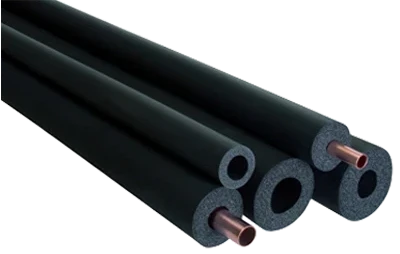
How does it work?
The foam tube will stop the heat from escaping, meaning the water will stay warmer for longer
This will save money on heating the water, which adds up over time.
By keeping your pipes warm, pipe insulation will also help stop your pipes from freezing, but insulation isn’t the be-all and end-all in this case.
To stop a disastrous pipe freeze, you should also keep your heating on at all times (many modern thermostats and controls come with a frost setting for this reason).
Pipe insulation cost
It usually costs between 0.75p to £4.50 per meter depending on diameter wall thickness and material, this will usually cost around £20 to £75 to insulate the primary pipework (All the pipes between your boiler radiators and hot water tank)
It’s more than worth the cost, according to the energy-saving trust
What type of pipe insulation do you need?
There are various materials used to insulate pipes, most domestic homes would use standard foam insulation or Class O Insulation in larger homes that have a plant room you will often see foil-backed insulation giving higher insulation values.
These have different benefits and drawbacks, but which one you should use largely depends on the location, temperature, and size of your pipes.
The foam tube will stop the heat from escaping, meaning the water will stay warmer for longer
This will save money on heating the water, which adds up over time.
By keeping your pipes warm, pipe insulation will also help stop your pipes from freezing, but insulation isn’t the be-all and end-all in this case.
To stop a disastrous pipe freeze, you should also keep your heating on at all times (many modern thermostats and controls come with a frost setting for this reason).
Pipe insulation cost
It usually costs between 0.75p to £4.50 per meter depending on diameter wall thickness and material, this will usually cost around £20 to £75 to insulate the primary pipework (All the pipes between your boiler radiators and hot water tank)
It’s more than worth the cost, according to the energy-saving trust
What type of pipe insulation do you need?
There are various materials used to insulate pipes, most domestic homes would use standard foam insulation or Class O Insulation in larger homes that have a plant room you will often see foil-backed insulation giving higher insulation values.
These have different benefits and drawbacks, but which one you should use largely depends on the location, temperature, and size of your pipes.
Hot water tank insulation
It also makes sense to insulate your hot water tank. After all, you don’t want any of your precious heat getting away, and there is no point in your hot water tank’s room being warm and toasty, at the expense of the rest of your home.
How does insulation a hot water tank work?
Nowadays most hot water tanks come pre-insulated but just in case yours isn’t It’s as easy as slipping on a jacket – because that’s what it is! You insulate your hot water tank by coating it with a jacket. If you already have a jacket around your tank, measure its thickness. If it’s less than 80mm – which is the British standard – we’d strongly encourage you to make sure all the joints are closed.
Is it worth it?
Even if your current jacket is 25mm thick, buying an 80mm one can save you £20 per year, according to BST
Bear in mind that an 80mm thick jacket, which meets British standard requirements won't cost the earth.
If you don’t have a jacket on your hot water tank, or any insulation on your piping, installing everything yourself could save you up to £100 per year, it can also save up to 530kg of CO2, for the average person in the UK that an 8% reduction of your carbon footprint – all while saving money at the same time
It also makes sense to insulate your hot water tank. After all, you don’t want any of your precious heat getting away, and there is no point in your hot water tank’s room being warm and toasty, at the expense of the rest of your home.
How does insulation a hot water tank work?
Nowadays most hot water tanks come pre-insulated but just in case yours isn’t It’s as easy as slipping on a jacket – because that’s what it is! You insulate your hot water tank by coating it with a jacket. If you already have a jacket around your tank, measure its thickness. If it’s less than 80mm – which is the British standard – we’d strongly encourage you to make sure all the joints are closed.
Is it worth it?
Even if your current jacket is 25mm thick, buying an 80mm one can save you £20 per year, according to BST
Bear in mind that an 80mm thick jacket, which meets British standard requirements won't cost the earth.
If you don’t have a jacket on your hot water tank, or any insulation on your piping, installing everything yourself could save you up to £100 per year, it can also save up to 530kg of CO2, for the average person in the UK that an 8% reduction of your carbon footprint – all while saving money at the same time
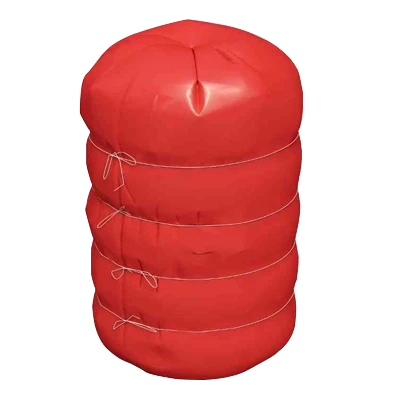

Besides a boiler, radiators are arguably the most used part of your central heating system, if you’re trying to save money on your heating bills this winter or are considering delaying ramping the heating up then radiator care and maintenance are essential!
Radiator care
As a nation we waste so much energy through poor heating choices and by not looking after our radiators, the following tips will help ensure your home stays nice and cosy this winter whilst cutting the costs.
Try turning your thermostat down by 1°, surprisingly it could save you up to 10% on your heating bill.
Remember that power flushing is also just as important to remove sludge and debris, cold spots at the bottom of your radiators are a sure sign your system needs to be flushed a cheaper alternative is to add a cleaner to the heating system that will break the sludge down this will need flushing out after a period of time and an inhibitor adding when filling the system back up and could be done by an enthusiastic DIY’er
If you want to reduce carbon emissions further and spend less on your heating, underfloor heating may be something to consider. Underfloor heating has a more precise setting, allowing you to individually control rooms and set timers to avoid wasting energy. Whilst it can be an expensive one-off purchase, it will last for years and there really is nothing better than cosy, warm toes on a cold morning.
Radiator care
As a nation we waste so much energy through poor heating choices and by not looking after our radiators, the following tips will help ensure your home stays nice and cosy this winter whilst cutting the costs.
- Clean Your Radiator
- Stop Draughts & Close Windows
- Get the Right BTU for your room
- Don’t Turn Your Thermostat Up to High
Try turning your thermostat down by 1°, surprisingly it could save you up to 10% on your heating bill.
- Bleed your radiators
Remember that power flushing is also just as important to remove sludge and debris, cold spots at the bottom of your radiators are a sure sign your system needs to be flushed a cheaper alternative is to add a cleaner to the heating system that will break the sludge down this will need flushing out after a period of time and an inhibitor adding when filling the system back up and could be done by an enthusiastic DIY’er
- Introduce soft furnishings
- Upgrade your thermostat
- Avoid Drying Clothes on Your Radiators
- Get a Better Radiator or Invest in Underfloor Heating
If you want to reduce carbon emissions further and spend less on your heating, underfloor heating may be something to consider. Underfloor heating has a more precise setting, allowing you to individually control rooms and set timers to avoid wasting energy. Whilst it can be an expensive one-off purchase, it will last for years and there really is nothing better than cosy, warm toes on a cold morning.

Underfloor heating systems provide plenty of benefits for your home. It’s incredibly comfortable to walk barefoot on and frees up wall space. Thanks to improvements in heating technology, underfloor heating is also cost-efficient, it has become a great solution for homes with renewable heating sources and can make your transition to a sustainable home that much easier.
Meanwhile, the running costs of underfloor heating systems can depend on a variety of factors including the effectiveness of the room's insulation and the total running time. Thicker insulations yield much better energy savings. Water-based heating systems tend to have higher efficiency and lower running costs but the initial cost can be slightly higher than electric underfloor heating. Electrical-based systems are easy to install but do have slightly higher running costs than water-based systems.
You can learn more about the benefits of underfloor heating in our blog post, if you've made a decision on getting it installed you may also want to read up on if an electric or water based option would be better for you.
- Low Maintenance Costs
- Energy Efficiency
- Low Running Costs
Meanwhile, the running costs of underfloor heating systems can depend on a variety of factors including the effectiveness of the room's insulation and the total running time. Thicker insulations yield much better energy savings. Water-based heating systems tend to have higher efficiency and lower running costs but the initial cost can be slightly higher than electric underfloor heating. Electrical-based systems are easy to install but do have slightly higher running costs than water-based systems.
- Controllable Temperatures
You can learn more about the benefits of underfloor heating in our blog post, if you've made a decision on getting it installed you may also want to read up on if an electric or water based option would be better for you.



